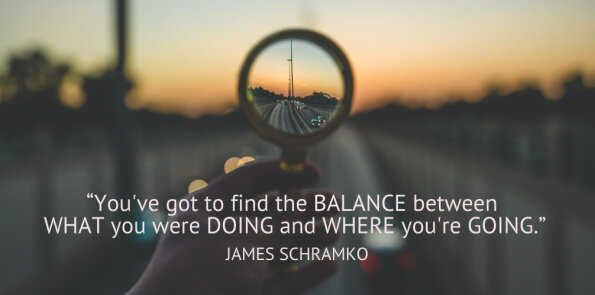Podcast: Download (Duration: 21:30 — 20.5MB)
Get Notified Of Future Episodes Apple Podcasts | Spotify | Amazon Music | Android | Blubrry | Gaana | TuneIn | Deezer | Anghami | RSS | More
James has finally switched membership platforms, and in this episode, he shares how John Lint’s Kleq has transformed his membership.
They look back on the changes James has been through and how he arrived at the decision to move and to start fresh.
He and John talk about native apps and the many benefits they offer.
And James offers some parting advice for anyone who is thinking about starting their own membership today.
Table of contents
1. A process of metamorphosis
2. Moving forward by looking back
3. The real power of apps
4. What the recent changes translate to
5. Deciding what to keep and how to improve
6. The popular features
7. A decade of experience and knowledge in marketing
A process of metamorphosis
With over a decade’s worth of content, moving platforms was definitely a big undertaking. James’s membership was a big beast, a Frankenstein of various components. It seemed impossible, until KLEQ.
Now that the dust has settled, members of the new community are buzzing. And James is excited to share the changes he’s been through.
KLEQ is easy to use. It’s like an ATM – you won’t need instructions to make it work. James was able to move things around, create products, edit carts – all on his own. He has a team but wanted to go deep, to experience what it would be like for someone who had no outside help whatsoever.
The goal this time was to go lean and simple – remove things that were no longer needed like Intercom. The new setup requires no coding, hence there’s less and less for James and his team to do moving forward.
Moving forward by looking back
But to move forward, one needs to look back. Why was the old membership so complicated? The simple answer is there was no KLEQ then, and James had to make do with what was available to build his community. And that included expensive hosting, dozens of plugins, and tons of moving parts. It required a lot of work, but it did the job.
However, it came to a point where someone starting today would actually have an advantage over him. It made him think, did he really want to hold on to the old platform and miss out on the potentials of the future? No. Did he want to continue doing the membership model? Absolutely!
Owning the racecourse was not an issue because, one, his database is in Ontraport and backed up to a CSV file regularly. Two, billing was through Stripe and PayPal, which are separate from the platform.
Three, all content was uploaded either to Amazon S3, Wistia, or Google Drive. And finally, every playbook and PDF was stored in Google documents. So if he lost everything today, he could set up on a new membership site builder easily.
The real power of apps
And thanks to the technology we have today, James is more active in his membership. With the new business app, he receives push notifications when things happen, real time. This is much more convenient compared to the emails he used to get from the old system. It’s definitely a different experience.
John explains that this was a very big consideration when they were building the app. The team at KLEQ wanted to create something that Apple wants and that benefits the users.
Having a native app for your business is truly beneficial. Yet, what most website owners need to understand is there are also consequences. For example, adding a feature on a website means coding it for iOS and for Android as well – simply copy-pasting will not work.
But that’s how you end up with a good mobile experience, and the KLEQ team are working hard to make things better and updated with all the new features.
Can you have your own logo on the app? No. James explains that it will be called Academy+ and will have a neutral logo. This way, you won’t have to worry about dealing with Apple or Android, nor employ a team of developers to run your app.
What the recent changes translate to
Instead, you can use your time to focus on the things that actually matter – providing value and delivering results to your customers.
John agrees, saying you really don’t have to rely on social media platforms anymore. They’re not particularly safe, anyway, as they can shut you down anytime, for whatever reason they deem valid. Concentrate instead on building a community and finding ways to make it engaging.
Deciding what to keep and how to improve
Find the balance, James says, between what you were doing and where you’re going, even if this means taking risks and starting fresh. But more importantly, never blindly take advice from anyone. Look at your data and base your decisions on what your data tells you.
Take your emotions out of the equation and watch out for your users’ behaviors and feedback. This is how James came up with his playbooks – he took his best stuff, those that his members raved about, and curated them to one-pagers. And people were ecstatic about them.
He also takes feedback to John, asking if certain features can be incorporated into the community. Sometimes these are rolled out in the next update, especially if they will benefit everyone. Other times, John suggests a better way of doing it with the platform’s existing features.
The popular features
And this was important, because James was adamant about starting with the minimum possible. He wanted fewer segments, less products, and only the most popular threads from his old system.
One of the features that moved across to the new platform was Pods. People love Pod coaching and John agrees that it is an amazing product.
Basically, Pods allow members to pair up and discuss topics with each other and James in private. Pod partners can chat and do Zoom calls, and James even drops in on some of them. And what these interactions do is offer encouragement and support, and create accountability. A better approach compared to doing it alone.
Another thing James realized is that his highest-level members want to mastermind with each other. So he took KLEQ’s famous social wall, renamed it Power Wall, and let the heavy hitters mingle. This is actually a new product and James has high hopes for it.
A decade of experience and knowledge in marketing
And with James’s 10 years’ worth of experience, and John’s analytical mind and understanding of sales and marketing, users can expect more amazing things in the future.
James may have been putting off the switch but he’s really glad and relieved that he finally did it. His advice for anyone thinking about building a membership? Don’t get stuck in the tech or build a Frankenstein like he did.
He encourages people to check out KLEQ.com. It’s an incredible platform that can help build and scale your business with a minimum of stress and complexity.
Liked the show? Leave us a review on iTunes











Leave a Reply